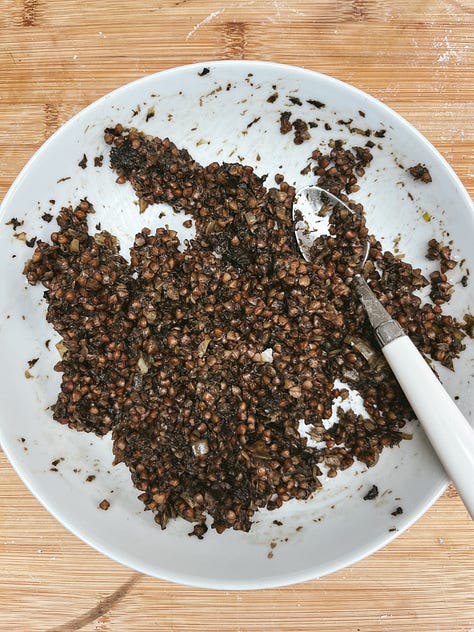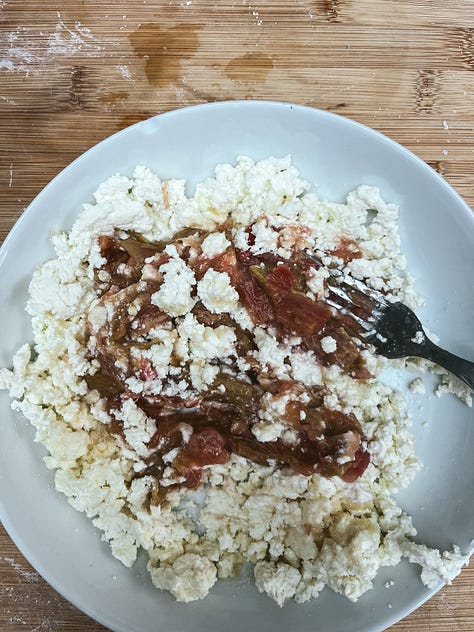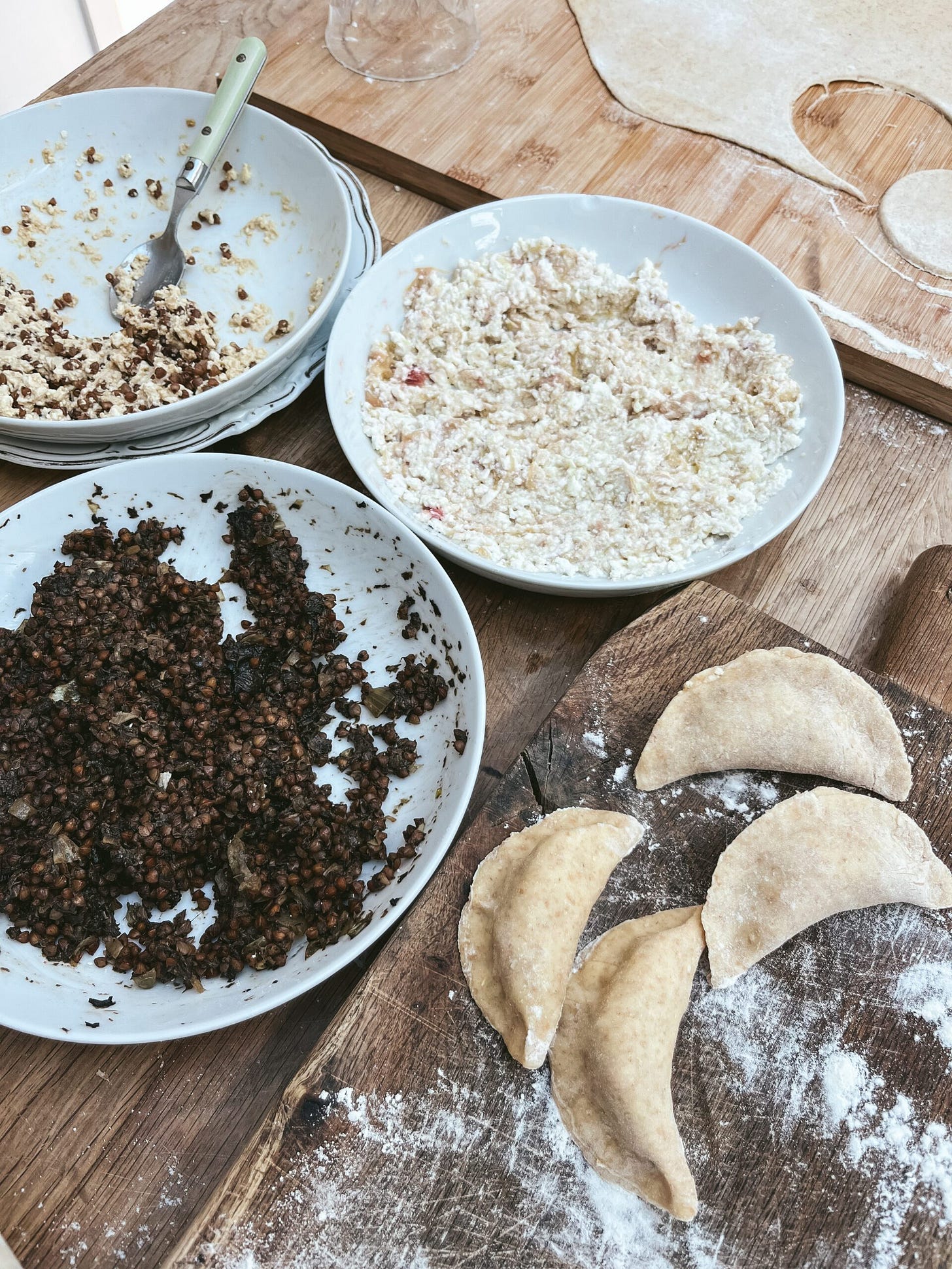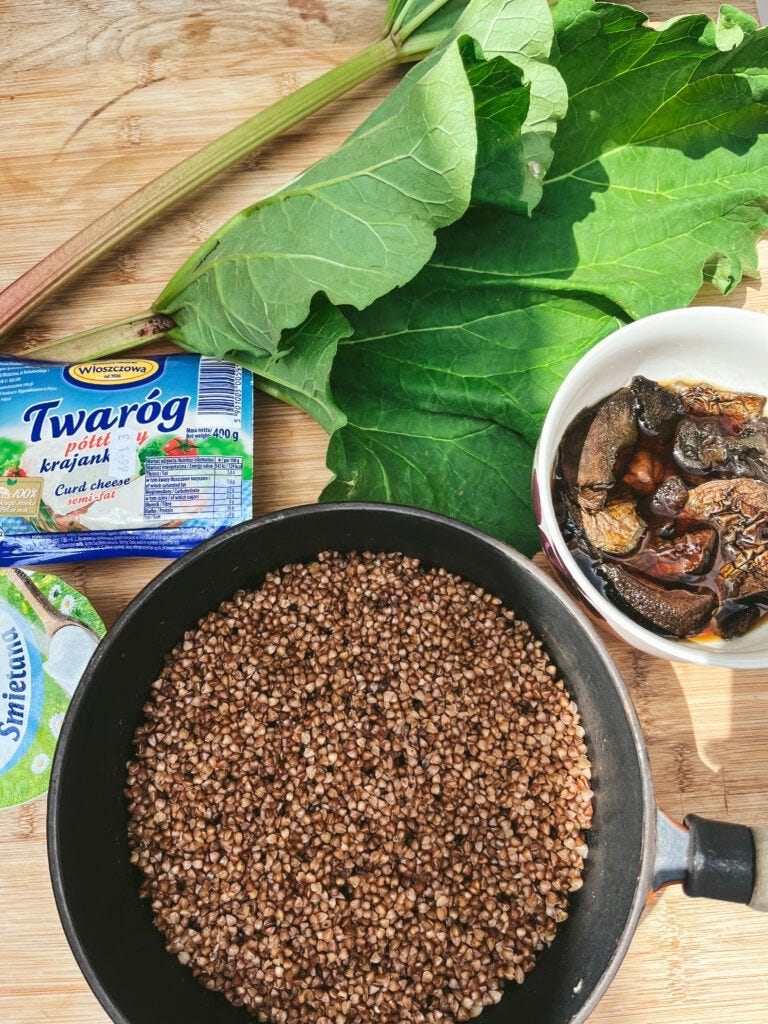Life has a funny way of coming full circle. That’s the first line of my third book, Pierogi. And now, it’s done it again. After writing a whole book about Polish dumplings, and suffering burnout during the promotion period (even though I was grateful for all the publicity), I stopped making pierogi for a while. Yet those little parcels of joy have a way of coming back into the fold (pun intended). First, you eat them at a restaurant, then someone’s house and before you know it you are kneading their pillow soft dough and daydreaming about all the new flavour combinations.This leads me to the idea that perhaps life simply comes in circles, all overlapping one another in some complex yet coherent spiral structure.
Ingredients
A few weeks ago, I made a healthier pierogi dough. This week, I made a similar one but with spelt (will share in the future), and additionally, I made a video about gluten-free buckwheat pierogi for the AltGrains Community, which I will link to once it’s been uploaded to their site. That’s a lot of pierogi dough, so I decided to make a few of my favourite (accidentally) gluten-free pierogi fillings. They happen to all be accidentally vegetarian too (as most of my pierogi are). What’s fun here is that a few ingredients used in a varying combinations create three completely different pierogi. This is what you’ll need. From the Polish shop: roasted buckwheat groats, wild mushrooms, twarog and smietana. From the garden: rhubarb (could be replaced with a good apricot jam or the like) and a small onion. Apart from that you just need butter and oil.
Kasha
Kasha is the name that is used for toasted buckwheat groats in the West. Even though in Poland, this is just one time of “kasza”, I love the word and am happy to go with it. To cook the kasha: rinse it, then place in a saucepan and cover with half an inch of cold water with a bit of salt. Bring this to the boil, then turn the heat right down, cover with lid and continue to simmer for about 15min until all the water has gone. Then, take a towel and wrap the whole pan in it, so that no steam escapes. Place this bundle in a bed or under some cushions – somewhere warm for a further 15-30 minutes.
Recipes for my top 3 gluten-free and vegetarian pierogi fillings



Buckwheat and wild mushroom
This is a classic filling from the east of Poland, where the buckwheat grows – tastes earthy, like a forest.
Ingredients
100g toasted buckwheat groats (kasha), cooked
40g dried wild mushrooms
1 small onion, finely sliced
Tablespoon of butter
Salt and white pepper
Directions
Rinse the mushrooms under running water, then cover with some warm water from a pre-boiled kettle and leave for 30min, to rehydrate,
Drain the mushrooms, slice them, then place in a pan and cover with boiling water. Simmer for about 20min, then turn the heat off.
Fry the onion in a tablespoon of butter until caramelised. Add the mushrooms with a tablespoon of the liquid they were cooked in and simmer for 5min altogether. Season. Transfer to a food processor and blend to a thick paste.
Add the mushroom mixture to the kasha and mix ell to combine. Taste and adjust seasoning.
Sweet kasza and twarog
This pierogi filling hails from Lublin in the south-east of Poland via my Parisian friend. It has now evolved a bit, as I make it so much. It' taste of earth and caramel's nutty and caramelly.
Ingredients
100g roasted buckwheat groats, cooked
200g twarog
1 egg yolk
2 tablespoons coconut sugar
Directions
Mash the twarog and the egg yolk using a fork.
Sprinkle on the coconut sugar and mash a bit more.
Add the cooked kasza and mix thoroughly.
Rhubarb and twarog
A filling I created for my supper club years ago and has become a firm favourite - gently sweet and fragrant.
Ingredients
2 rhubarb stalks, sliced
200g twarog
2 tablespoons golden caster sugar
1/2 teaspoon vanilla extract
Directions
Place the rhubarb in a pan and cover with boiling water. Bring to a simmer and turn the heat down. Cook for about 10min or until soft, then drain and set aside.
Mash the twarog, sugar and vanilla extract with a fork.
Add the rhubarb to the twarog and continue to mash until everything thoroughly combined.






I don’t see any mention of spelt being used in your last post, at least not at your website that you linked. Maybe you should link the Substack post if it does include spelt? Also, I’m assuming that these fillings are for a gluten free dumpling dough? It’s kind of hard to make a filling that has gluten in it, isn’t it?